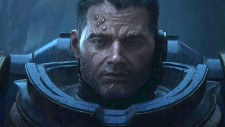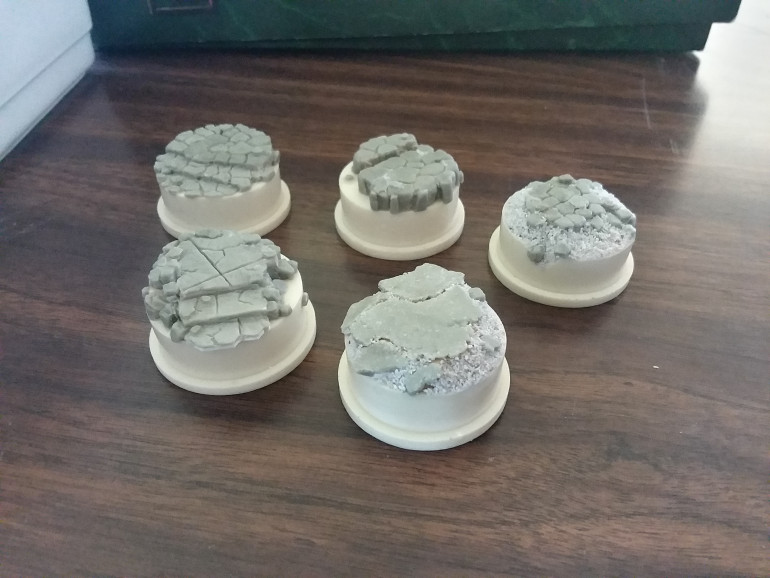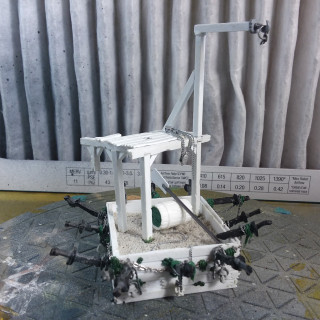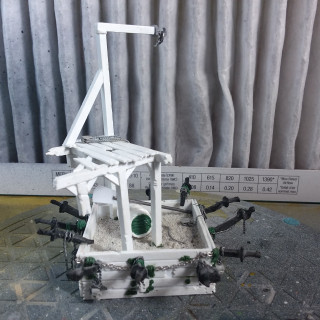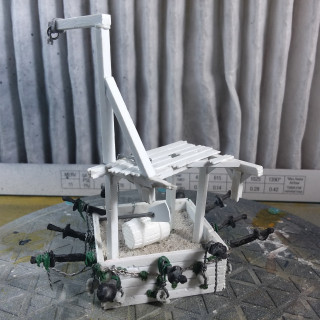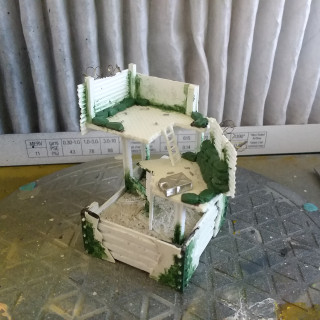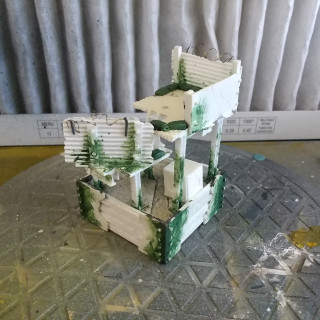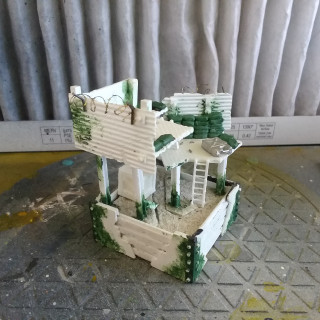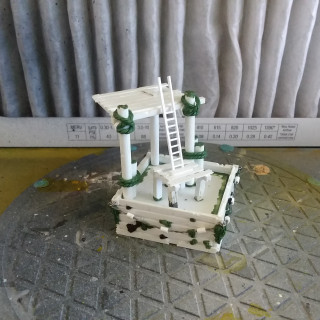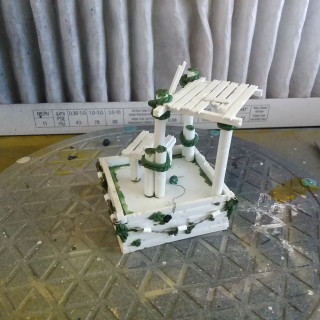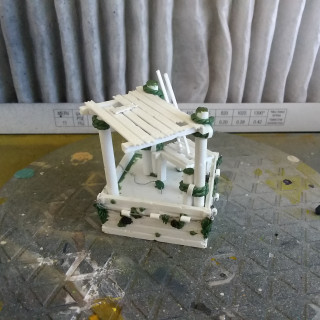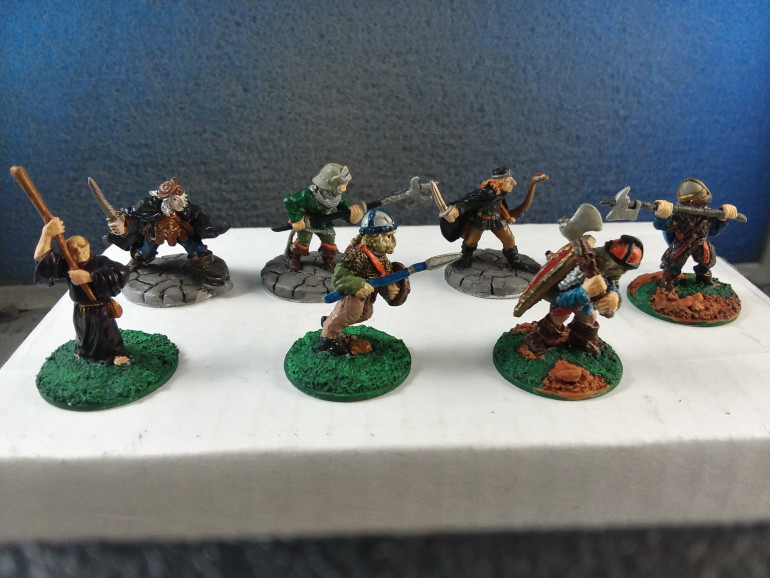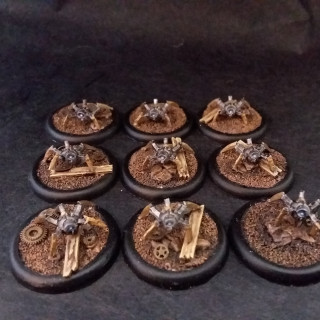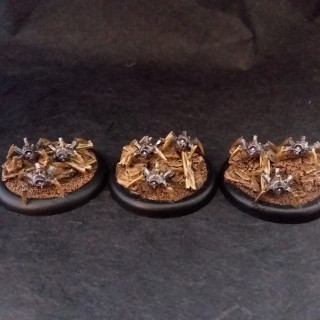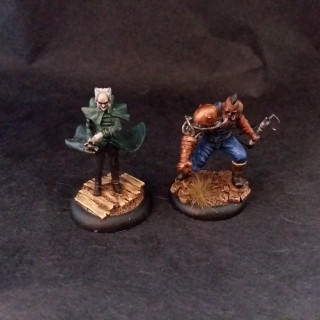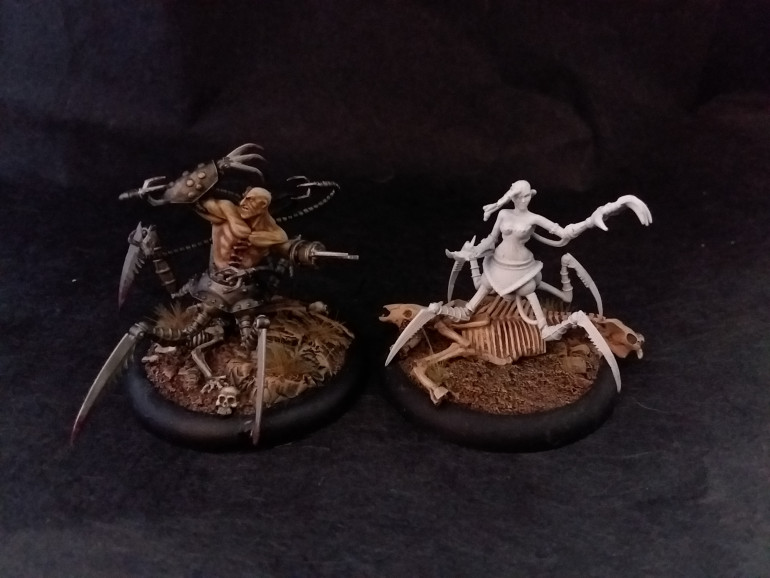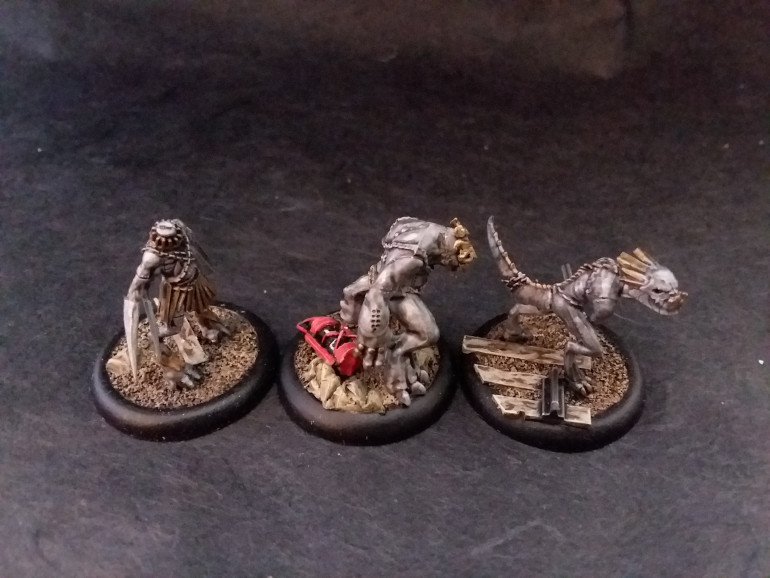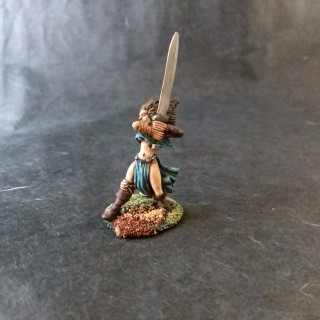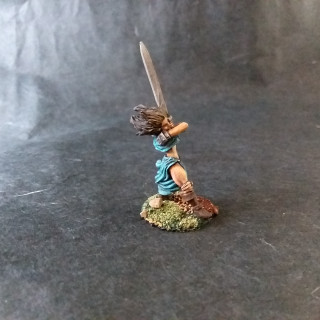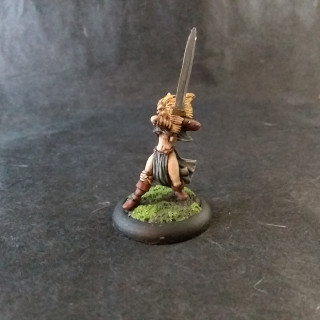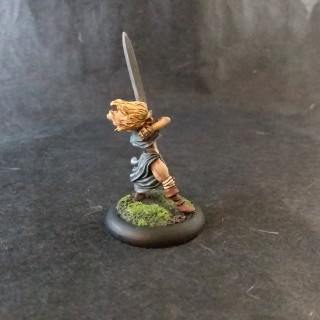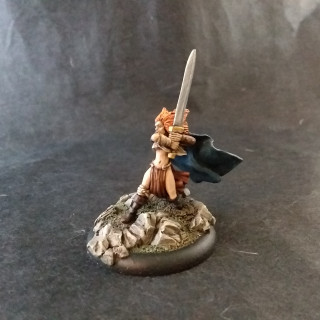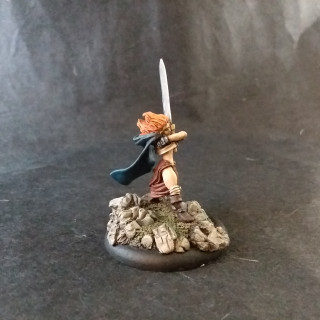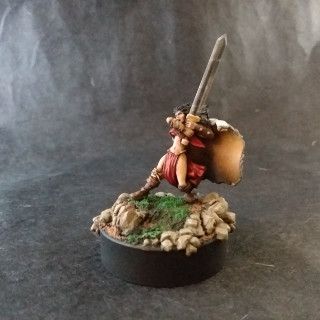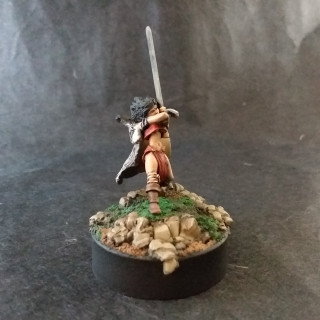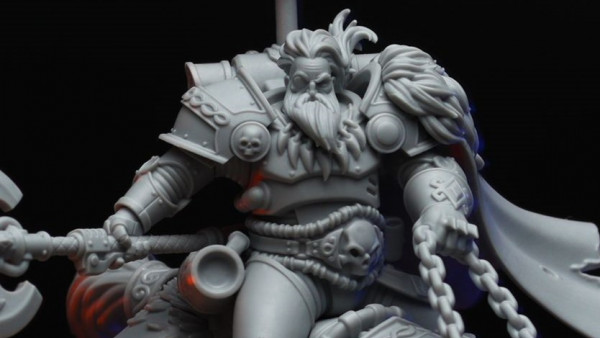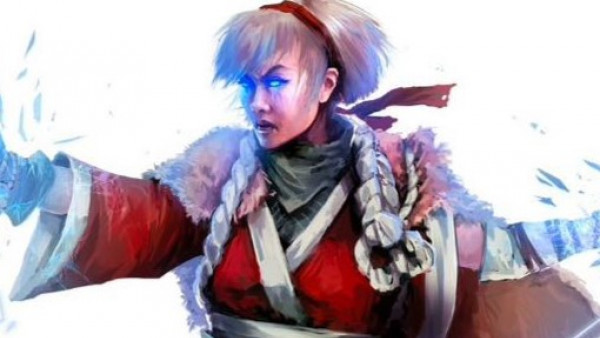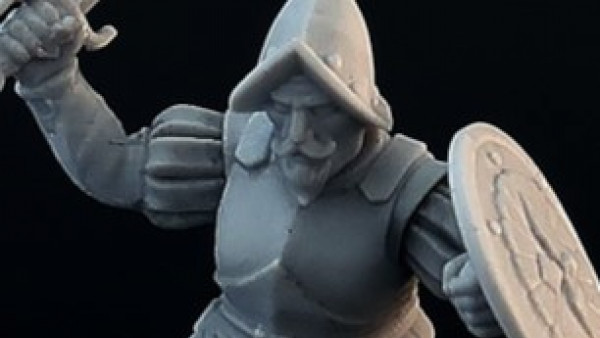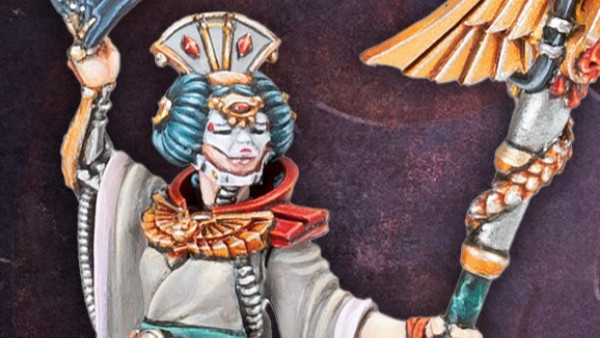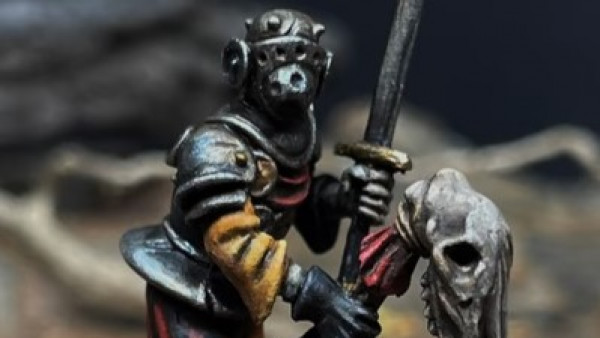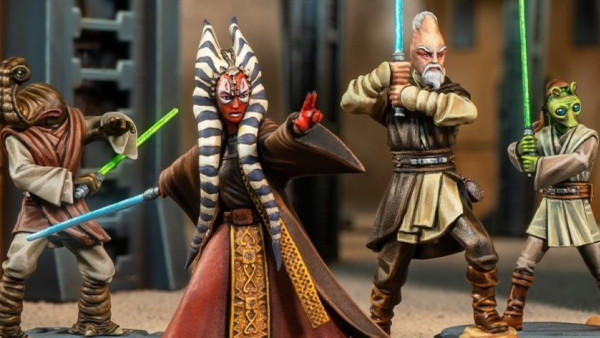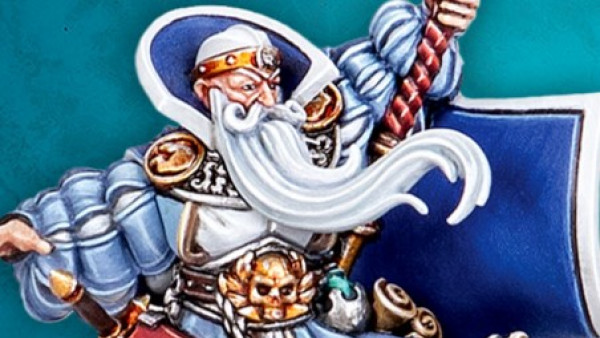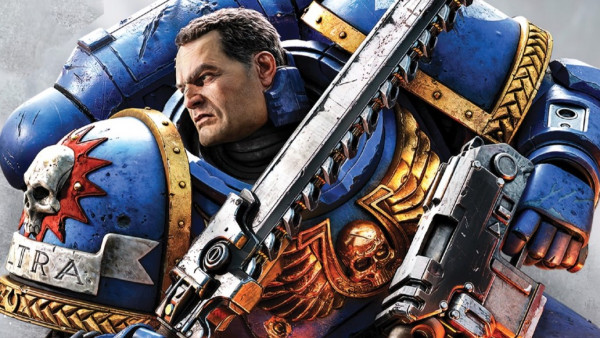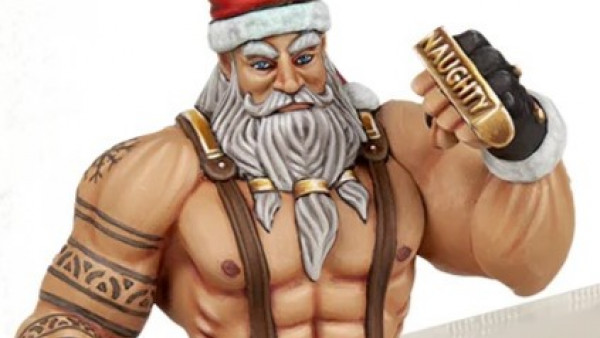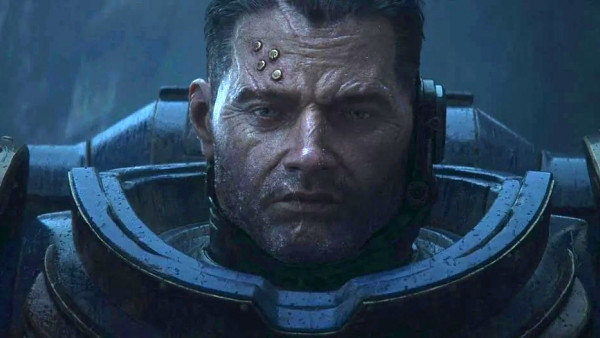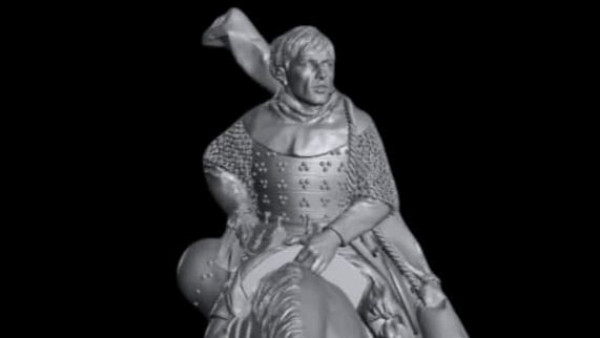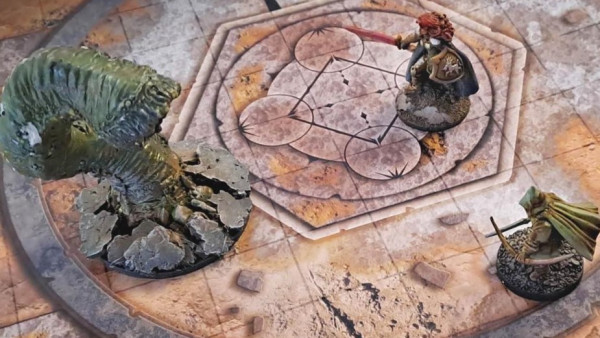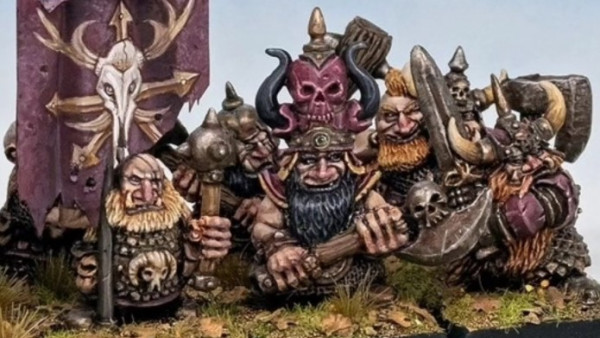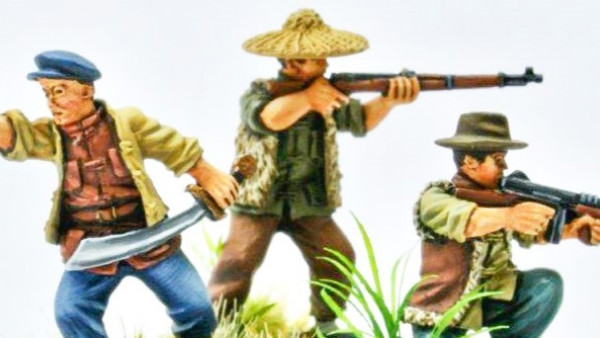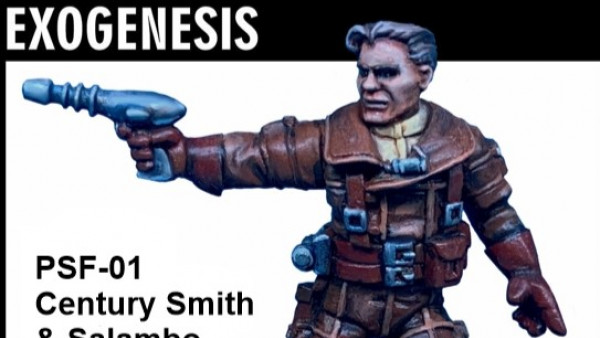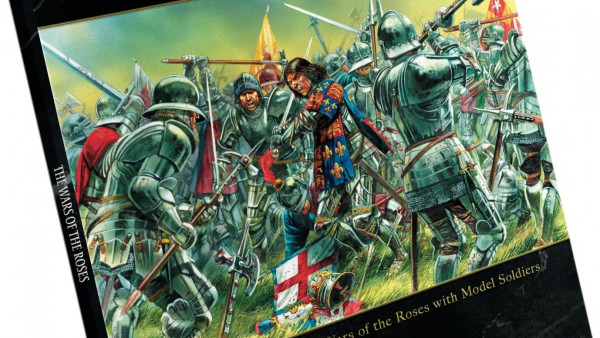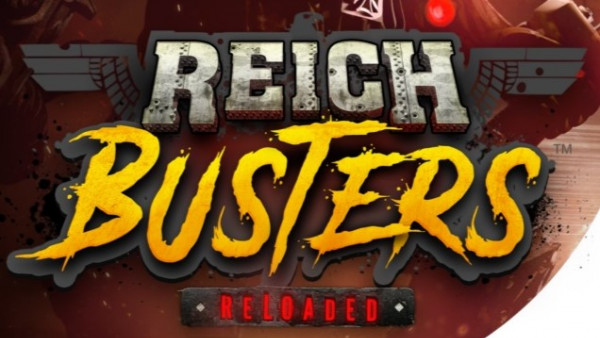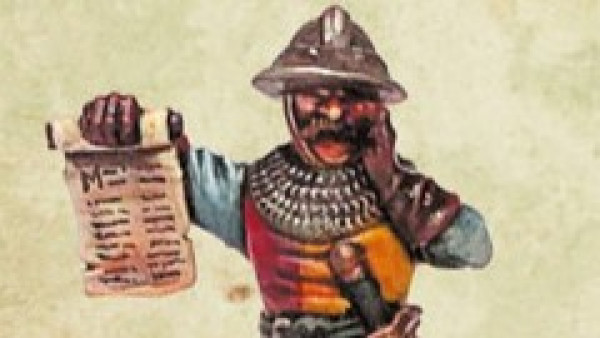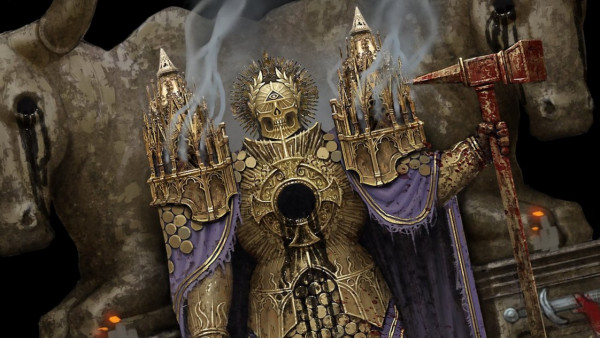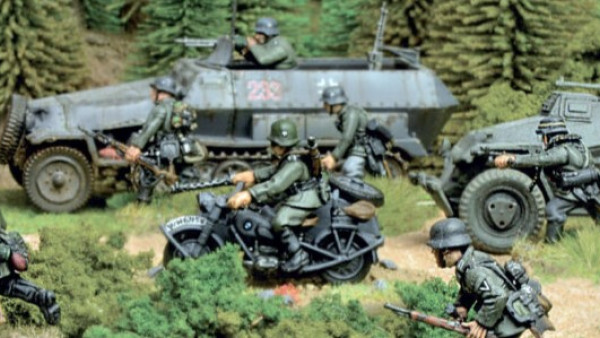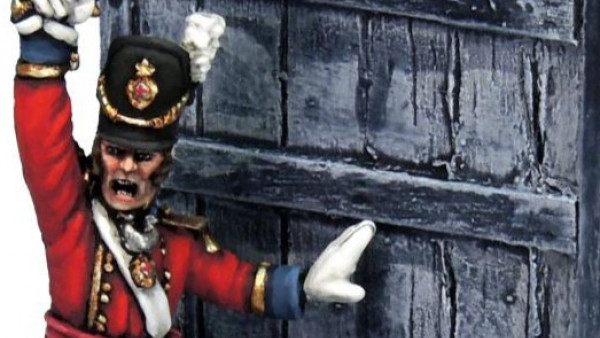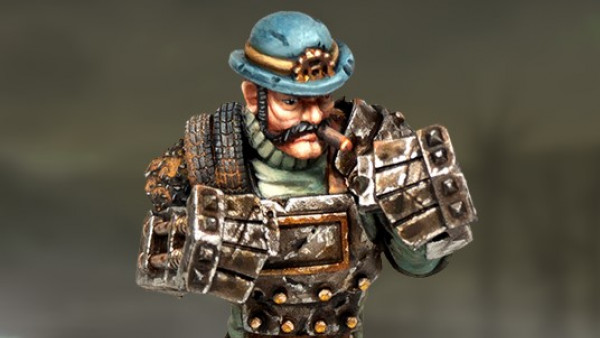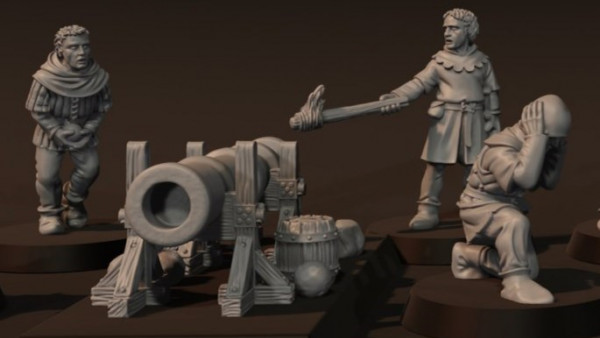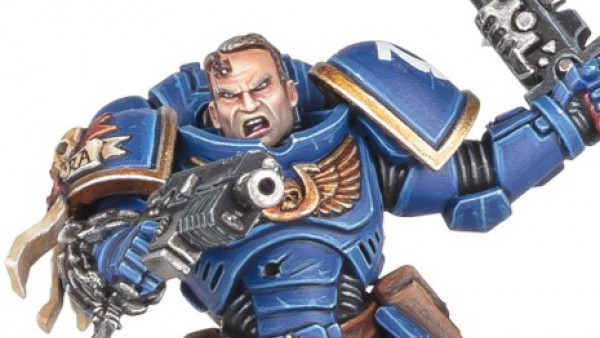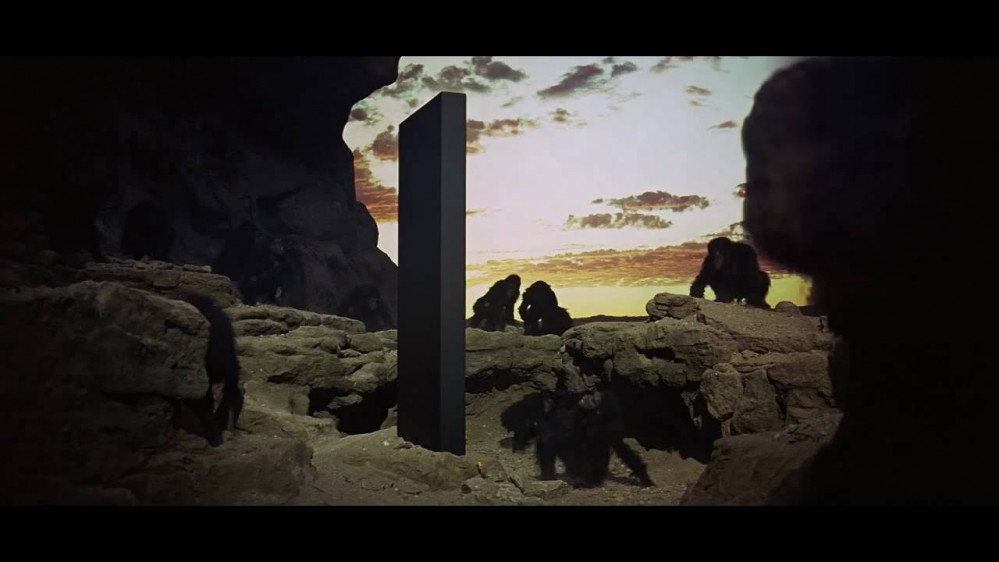
Base: The Final Frontier
Recommendations: 74
About the Project
This is a look at the final detail that most gamers/painters consider in the figure painting hobby and making it stand out front. Hopefully it will add more to the models you paint and present.
Related Genre: General
This Project is On Hold
Some semblance of authority?
Its official that I’ll be helping out at the local gaming convention for a basing class. I’m not in charge of the ordeal. I’ll be the standby guy and see how it goes for this year. It’s not being run as a “How To Base” with a selection of materials to hand out or great information of step by step to be followed. In general its a theoretical application of basing where people will bring in their own projects and put them together themselves with a couple of people giving general pointers. Yeah, it sounds like a lame setup but I think maybe a place where I could change perception for better creation.
I think of it as putting on a design class. The elements are really just the same but instead of lines, shape, color on a 2D medium we take it into 3D space. This really is a new idea to me and might be really damn fun to explore. I’m not much for going in on printed media for design and even less so for the digital world because I don’t do those things . I’m pretty simple in this regard of concrete creation. In a world of great flexibility and importance being placed on the digital, the analog world that can be comprehended and interacted with appeals to me despite limitation and the imperfections.
My clumsy hands and the mind ever-dulling which drives them will be utilised to the best of my ability. Hopefully I can inspire some people to make great things that I can look at and admire for their own talent and effort.
Holy hell its a plinth!!!
I’ve decided to pull this project from under the mothballs in thinking I was done with it. I think I merely got bored and frustrated with not creating a substantial tutorial project.
I’m reviving this, not for the Spring Clean 2023 but as a record for the random crap I build to show off in basing. The impetus for this is that I actually might start to teach this as a class next year for a local convention. I honestly have no damn clue how to do the presentation but maybe this can give me something to use as a skeleton of notes for future reference. I keep coming up with ideas and setting them aside that may or may not get paint. I might as well have something to show for it in the digital afterlife that Anonymous might never forget.
Done and done
A short and sweet attempt at making bases more interesting and pointing out the element comes to a close. I’ve got to draw down the great sprawl of ideas and focus (Wha!?!).
Meh, its back to hobby randomness and set this down
I think that the idea initially was worth the effort to point out basing techniques and things that could be done but I’ve come to a juncture where there are so many things going on whittling down the projects is well in order. I’ll call this short and sweet finished despite a lack of substance. Making minis feel homed on bases will just be a thing to look at and not need the explenation.
Extra! Extra! Build All Around It!
Now when doing the hobby its generally doing large forces with units at the ready for potential lists that you end up with extras rip, roaring and ready to go covered in paint… just in case. The same can be true with the incidental single figure for tabletop play as either a PC/NPC. Well, what if you had the intent of just fiddling about and doing display painting? It doesn’t seem like a very sound idea to build up something as specific as a singular base and then just have it stand by, just in case, or is it?
Every model has a particular flavor to it and a level of appeal that manages to grasp out attention to accept of reject the offer of purchasing it from our FLGS or online retailer. In all of this there are particular genres/motifs that we can see and map out with Venn diagrams if we really put our heads to it. I like to think that there are are flavors that appeal to tastes allowing for better expression of what we imagine our figures experience. Basing is the small world (avoiding copyright of a wonderful game and an evil rat) where our figures might breathe, or for the abdead, where they shook off their mortal coils and joined the choir invisible. The fun of what we see beyond the figures gets literally grounded and with just a few millimeters making tabletop or shelf space come to life.
Having a few extra bits lying about can make this easier in order to excite the mind to potential occupants. “That’s just what I need!” is often what I think when fiddling around in browsing figures after some build time. As case in point is a present floor that I’m sculpting a bearskin rug and then saw one of Brother Vinni’s bunny hostesses lying down. I’ve ordered one and found that Deep Cuts had a wizard’s room set with all sorts of translucent bottles. I picked one of those up and I’m looking for a platter to put down and hope to find a creator for wine glasses/brandy snifters in the mass of Shapeways shops. It all starts from a place to feel real around a figure. The world is yours (mind the cane).
Build big and make it interesting
With the Spring Clean going on I figured I’d show off some old builds that I’ve had lying around. Since the push is for painting I’ll leave this out of the event. This is just a little something that has been gathering dust but reminding me that things can be really cool if you just put the time into developing a portion of the art.
Building bigger better bases
Larger display pieces for figures definitely need time to work on. These things are not impossible to build but do require patience. Then again there is always the initial inspiration that needs to strike. I have a post-apoc outpost that I was going to put one of my Raging Heroes Jailbird figures on but decided against it as I got too bogged down in other projects (before I got my airbrush). My other base is nautical themed that would allow for a resin fill to give an illusion of liquid that would sell the piece overall.
Plastic and epoxy can give you quite a bit to play with as long as your idea pushes you to build where you can add other detail materials. There is always more work to play with.
Bringing new life to old minis
Long ago and far away in the time probably a little early into that of Ral Partha and well into Grenadier minis were made to a true 25mm scale. The sculpting wasn’t much to write about but it served its function beyond that of your average lead Napoleonic toy soldiers. This was the era where Stranger Things drew their lot of figures and painted them with heavy coats of enamels.
My regular client for commission work came to me and asked if I would do something for his figures to give them bases that would be a bit more snazzy to enliven them the same way I was doing with his other figures. I obliged him and made sure to give them a space to live in with some sculpted stone or pumice/gravel built on washers from the hardware store. Knocking down the shine from their paint was easy enough with a dull coat and made sure that the bases would be sealed as well.
Tying a theme together
Here’s where I put together my original Malifaux posse to fit better into the fluff of the game. I’ve gone into work with Milliput Black once more and added human skeletons/skulls with bits of plastic strip and grass tufts to bring the groundcover to life.
Music possibly better suited to the Outcasts faction but still useful for game ambience
Deenah, a study
Same figure - different attitude
Here we have Reaper minis original female barbarian sculpt for Deenah (02518) in multiple copies. I picked it up originally as a play piece for my regular D&D campaign that I’d walk over to on the weekends. It’s plain and practical with the standard broccoli base that didn’t need to be expanded in order to be stable on the table. Figuring the metal was pretty bland I added some texture using PVA to stick on green flock and superglue to affix some sand.
Time went by and I felt that the figure was fun to paint and I decided to get another one. I was still intending to play tabletop D&D and seeing the interesting things with 30mm plastic I tried to fit the figure in. I was in luck as it fit perfectly within the 30mm round edge slotta. I looked at the base again and thought that there needed to be something more. On goes Coarse pumice from Golden and I painted over it with a bit of variation in color to make vegetation which works to play with.
I look again and thought to myself after messing around with Milliput Black on some other figures that it might be a good time to dress up another base. Here I have a 40mm plastic slotta that I’ve built up using a thin layer of cork board and sculpted rocks. I went back again and used the pumice to sit in as soil but painted it as an element of the base to give it the usual treatment of basecoat, wash and drybrush. I’ve considered going back to this one and adding grass tufts but its really pleasant to look at and see the progression. As this is one of my first tries at display painting the plastic round edge has seen some bumps and chipping but weathered pretty well through many moves.
The most recent completion of this model was based on top of a resin puck. I’ve heard that in competition there are no winners that come in on basic plastic. So far as I’ve seen in heavyweight competition that seems to bear out in the showcase work. Here’s another buildup on a layer of cork that I glued the pinned miniature on. Painting the elements separately made life much easier. This figure I focused on the modification elements and not so much the base. I’ll retouch the highlights on the rocks to make them pop better when I get around to it (maybe when I have no more figures to left to paint). Overall the sense that it is a presentation work is literally ‘heightened’ with a little lift from the tabletop. Yes, putting the work on a literal pedestal can be figuratively interpreted the same way. Breaking away from the table playspace gives another dimension to looking at figures.
I have another project with this same figure on the backburner and will get to it well before the retouch of the fourth figure. Again, it all comes down to clearing the backlog.
Of form and function
Normally we see figures on tables for specific games or various RPGs and say that they have awesome paint and completely skip the bases. The figure is the focus and all other things are tossed by the wayside. Competitions, in some cases, discount total presentation in lieu of the singular focus of technically applying pigment. Here’s where things are placed on their heads, like a good Cheshire cat, and the last detail situated as a starting point.
From here, the focus is on what kind of impact the piece should have. The more dramatic a setup is with the figure there should be a corresponding mini environment. A simple slotta base is fine and dandy if you were gluing on meeples and calling it a day but these are things you put effort into. Playing pieces get more love with a layer of PVA and a dash of flock as a bare minimum. Old lead true 25mm figures can come around with the addition of a stabilizing platform to give it a bigger footprint on hexmap. Here’s where more detail, with as much effort as you care to put in, can make a big difference.





























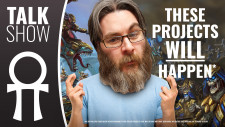



![How To Paint Moonstone’s Nanny | Goblin King Games [7 Days Early Access]](https://images.beastsofwar.com/2024/12/3CU-Gobin-King-Games-Moonstone-Shades-Nanny-coverimage-225-127.jpg)


